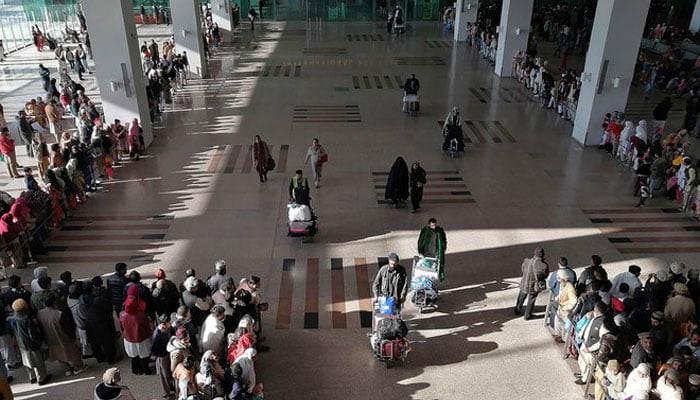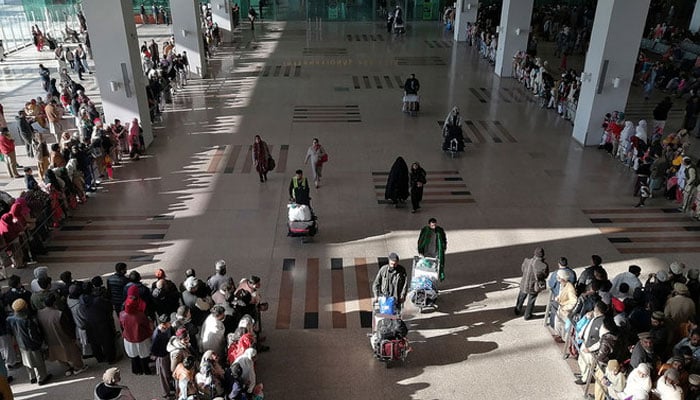By Nasra M Shah
Published in The News on December 24, 2023
A general impression these days is that any Pakistani who can find the means to leave the country is keen to do so owing to the increasing cost of living, personal insecurity and deteriorating quality of life.
A closer look indicates that international migration from Pakistan is multi-faceted and rooted in a range of diverse factors, and the above impression is hard to prove. Multiple newspaper articles and media debates have fuelled the impression that Pakistan is faced with a massive brain drain and that the exodus has doubled in the last two years.
Data on registered workers leaving for overseas employment is used as the basis for the above conclusion, which is incorrect. Determining the magnitude of the presumed upward trend requires a more comprehensive analysis.
In terms of the desire to leave Pakistan, a recent survey by the Pakistan Institute of Development Economics (PIDE) indicates that 37 per cent of adults wish to leave the country if they are given an opportunity. Among those with above secondary education, about half wishes to leave.
Data collected in worldwide polls indicates that about 900 million (16 per cent of all adults) would like to move permanently to another country. In 13 countries, more than half of the adult population would like to move to another country. Desires are, however, not always followed up by concrete actions to make the move and only 1-2 per cent actually take such steps.
A closer look at the empirical evidence indicates three main reasons for Pakistani emigration. First, for working overseas (or labour migration); second, for obtaining higher education; and third to join family members who may be prior migrants. Migration for taking up overseas employment, temporarily or permanently, is numerically the most important reason for leaving the country.
Almost 99 per cent of these migrants are men of a working age. Since 1971 when data on international migration started to be collected in a systematic manner, about 13 million Pakistanis left the country, and headed primarily to the oil-rich Gulf countries to take up temporary employment.
The number of registered workers leaving the country has fluctuated over time and about one million left Pakistan in 2015. The number declined to about 256,000 in 2020-21 due to the Covid-19 lockdowns and business closures. It then jumped in the post-Covid period to 833,000 in 2022 giving the impression of a massive and unprecedented outflow. A further misreading of the data resulted in the conclusion that all of the emigrants were highly qualified and highly skilled. In reality, only about 5.0 per cent of the emigrants were highly qualified while 43 per cent were unskilled labourers and 28 per cent were drivers.
The above data pertain to documented migrants who leave the country through legal channels. In addition, a substantial number leave the country irregularly through clandestine arrangements. Some meet tragic ends during such irregular migration such as the boat drowning of over 300 Pakistanis in June 2023 that caught a great deal of media attention.
The Pakistani diaspora, defined as persons of Pakistani origin who continue to maintain active ties with the home country, is estimated to be about 8.4 million. At present almost 4.4 million of this diaspora is residing in the Gulf countries. About 1.2 million are living in the US, 1.1 million in the UK and 0.23 million in Canada.
Data on student migrants is collected less systematically than that of labour migrants. Unesco reported that about 64,000 Pakistani students were studying abroad in 2020. Students may leave Pakistan through government scholarships and subsidies or they may self-finance their studies abroad. The government is more likely to keep the records of the former group. What percentage of the Pakistani students stay overseas permanently or return to Pakistan after completing their studies is not known.
It has been estimated that of all international students who complete their doctoral education in the US, at least half stay on in that country. We may infer that fairly large percentages of Pakistanis who complete their education in foreign countries tend to continue living there if they can find employment.
Family reunion or accompaniment of the migrant worker is the third main reason for emigration. Marriage migration of overseas Pakistanis to a relative or another Pakistani resident continues to be an important type of migration. Family migration varies according to destination.
In the case of the Gulf countries, only a minority of the migrant workers qualify to bring in their wife and children because they earn below the ceiling required for family migration. Migrants to Western countries, on the other hand, are relatively well-educated and tend to bring their families with them. Also, the regulations of most Western countries allow family reunion along with a path to citizenship.
Thus, the recent debate on a supposedly unprecedented outflow of Pakistanis must be contextualized within the facts that underlie the emigration process.







